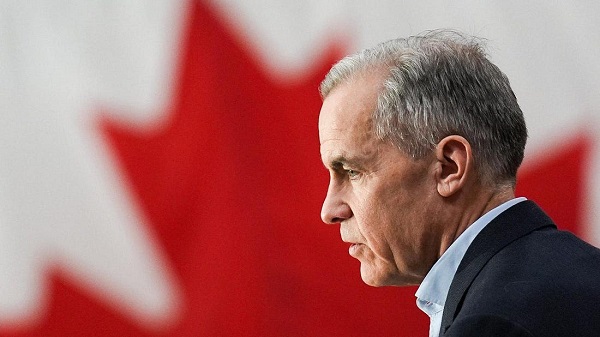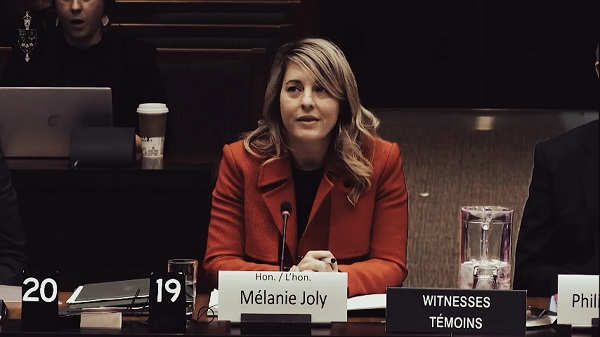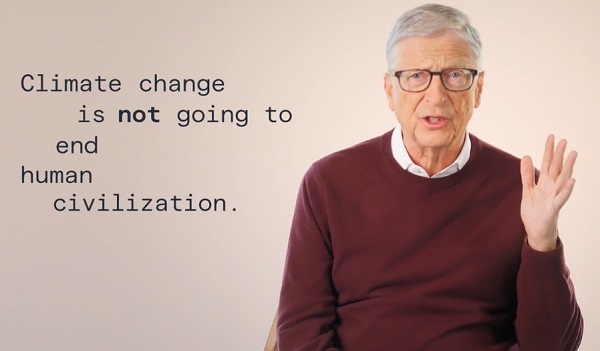Brownstone Institute
The Veil of Silence over Excess Deaths

From the Brownstone Institute
BY
Around the world, there has been a deafening silence over excess deaths from governments and the mainstream media, who not so long ago were quite fixated on the daily death toll for Covid.
On October 20th, a 30-minute adjourned debate (20 rejections later) on excess deaths in the UK House of Commons was finally secured by Andrew Bridgen, MP for North West Leicestershire and member of the Reclaim Party.
Bridgen began his speech to the sound of erupting cheers from the full, upper public gallery, in stark contrast to the almost empty chamber below.
Where were the hundreds of MPs who would normally sit shoulder to shoulder in the chamber? It appears, an increase in deaths of their constituents was not a pressing issue for them on that Friday afternoon.
We’ve experienced more excess deaths since July 2021 than in the whole of 2020, unlike the pandemic, however, these deaths are not disproportionately of the old, in other words, the excess deaths are striking down people in the prime of life but no-one seems to care. I fear history will not judge this house kindly.
Strikingly, excess deaths have been seen across all age groups, which Bridgen pointed out during his speech.
The graph below shows the pooled weekly total number of deaths for all ages, from 27 participating countries: Austria, Belgium, Cyprus, Denmark, Estonia, Finland, France, Germany, Germany (Berlin), Germany (Hesse), Greece, Hungary, Ireland, Israel, Italy, Luxembourg, Malta, Netherlands, Portugal, Slovenia, Spain, Sweden, Switzerland, UK (England), UK (Northern Ireland), UK (Scotland), and UK (Wales).

Source: EUROMOMO
According to the British Medical Journal, ‘Excess deaths are calculated as the difference between current numbers of deaths and those in a baseline year, and the excess can differ depending on the baseline and methodology used.’
This important point on how excess can differ depending on the baseline used, was raised by Bridgen.
ONS Manipulating the Data, Again
Bridgen explained:
‘To understand if there is an ‘excess’ by definition, you need to estimate how many deaths would have been expected. The Organisation for Economic Co-operation and Development (OECD) used 2015-2019 as a baseline…Unforgivably, the UK ONS (Office for National Statistics) have included deaths in 2021, as part of their baseline calculation for expected deaths- as if there was anything normal about the deaths in 2021- by exaggerating the number of deaths expected, the number of excess deaths can be minimized.
Why would the ONS want do that?’
My early 2022 interview with Norman Fenton, professor of Risk Information Management at Queen Mary, University of London, revealed how the ONS had also been manipulating the data on deaths involving Covid-19 by vaccination status.
Fenton coauthored a paper analysing the ONS report: ‘Deaths involving COVID-19 by vaccination status, England: deaths occurring between 2 January and 24 September 2021.’
The paper concluded that the ONS was guilty of ‘systematic miscategorisation of vaccine status’ and that the COVID-19 vaccines did not reduce all-cause mortality, but rather produced genuine spikes in all-cause mortality shortly after vaccination.
The Backlog of Unregistered Deaths
Bridgen went on to highlight a critical failure in how data on deaths are being collected.
‘There is a total failure to collect (never mind publish) data on deaths that are referred for investigation to the coroner. Why does this matter? A referral means that it can be many months and given the backlog, many years, before a death is formally registered. Needing to investigate a cause of death is fair enough. Failing to record when the death happened, is not. Because of this problem, we actually have no idea how many people died in 2021, even now. The problem is greatest for the younger age groups, where a higher proportion of deaths are investigated. This data failure is unacceptable.’
Excess Deaths in the Younger Age Groups
My investigative report into child deaths following Pfizer/BioNTech mRNA vaccine revealed there was an increase in deaths in the 0-14 age group, around the time the mRNA vaccine was authorised in children, 12-15 years of age.



Source: EUROMOMO
Bridgen drew attention to the fact that in a judicial review on a decision to vaccinate younger children, the ONS shockingly refused in court to give anonymised details (which they admitted was statistically significant) on the increase in excess deaths observed in the second half of 2021, for young adolescent males. Bridgen made the point that potentially even more excess deaths would have been observed, if those referred to the coroner had been included.
Excess Deaths Observed in Heavily Vaccinated Countries
In August 2023, fifteen EU Member States that recorded excess deaths, the highest rates were observed in Ireland (21.1 percent), Malta (16.9 percent), Portugal (12.7 percent) and the Netherlands (9.4 percent), according to Eurostat. It should be noted that, as of January 2023, Portugal had the highest COVID-19 vaccination rate in Europe having administered 272.78 doses per 100 people in the country, while Malta had administered 258.49 doses per 100.
Increase in Cardiac Arrests
Bridgen, brought attention to the fact that Dr Clare Craig, diagnostic pathologist and co-chair of HART, was the first to highlight the increase in cardiac arrest calls after the vaccine rollout in May 2021.
Bridgen stated:
‘Ambulance data for England provides another clue. Ambulance calls for life-threatening emergencies were running at a steady 2,000 calls per day until the vaccine rollout. From then they rose to 2,500 daily, and calls have stayed at that level since.’

Source: NHS Key statistics: England, July 2023
Category 1: An immediate response to a life-threatening condition, such as cardiac or respiratory arrest.
The Anomalies of the Pfizer Clinical Trial
Bridgen shared the fact that:
Four participants in the vaccine group of the Pfizer trial died from cardiac arrest compared to only one in the placebo group. Overall there were 21 deaths in the vaccine group up to March 2021, compared to 17 in the placebo group. There were serious anomalies about the reporting of deaths in this trial, with the deaths in the vaccine group taking much longer to report than those in the placebo group. That is highly suggestive of a significant bias in what was supposed to be a blinded trial.
An Israeli study clearly showed an increase in cardiac hospital attendances among 18-39 year olds that correlated with vaccination not covid.
Australia, the Perfect Control Group
Bridgen explained that Australia had almost no covid when vaccines were introduced making it the perfect control group.
The state of South Australia had only had 1,000 cases of covid in total across the whole population by December 2021, before omicron arrived. What was the impact of vaccination there? For 15-44 year olds, there were historically around 1,300 emergency cardiac presentations a month. With the vaccine roll-out to the under 50s, this rocketed reaching 2,172 cases in November 2021 in this age group alone, which was 67% more than usual.
Overall there were 17,900 South Australians who had a cardiac emergency in 2021 compared to 13,250 in 2018, a 35% increase. The vaccine must clearly be the No.1 suspect in this, and it cannot be dismissed as a coincidence. Australian mortality has increased from early 2021 and that increase is due to cardiac deaths.
How the Regulators Have Failed
The regulators also missed the fact that in the Pfizer trial the vaccine was made for the trial participants in a highly controlled environment, in stark contrast to the manufacturing process used for the public – which was based on completely different technology. Just over 200 participants were given the same product that was given to the public, but not only was the data from these people never compared to those in the trial for efficacy and safety, but the MHRA has admitted that it dropped the requirement to provide this data. That means there was never a trial on the Pfizer product actually rolled out to the public, and that product has never even been compared to the product that was actually trialled.
The vaccine mass production processes use vats of Escherichia Coli and presents a risk of contamination with DNA from the bacteria, as well as bacterial cell walls, which can cause dangerous reactions. This is not theoretical; there is now sound evidence that has been replicated by several labs across the world that the mRNA vaccines were contaminated by significant amounts of DNA which far exceeded the usual permissible levels. Given that this DNA is enclosed in a lipid nanoparticle delivery system, it is arguable that even the permissible levels would have been too high. These lipid nanoparticles are known to enter every organ of the body. As well as this potentially causing some of the acute adverse reactions that have been seen, there is a serious risk of this foreign bacterial DNA inserting itself into human DNA. Will anyone investigate? No they won’t.
The BBC’s Role
How ironic that the BBC has chosen to remain utterly silent on the issue of excess deaths, despite its ardent daily coverage of the Covid death toll.
In regards to vaccine injuries, the BBC took a far more proactive role. The public broadcaster took it upon itself to collaborate with Facebook to take down the online pages of Covid-19 vaccine injury groups, by drawing attention to the fact that these groups used carrot emojis to circumvent Big Tech censors.

Many viewers of Bridgen’s speech took to social media to draw attention to the fact that the BBC also took it upon itself to plaster the debate with its own captions, in an attempt to contradict what the MP was saying.
One caption read: The NHS says COVID-19 vaccines used in the UK are safe and the best protection from getting seriously ill with the disease.
What is interesting is that Bridgen did not mention vaccines and autism during his debate but this did not stop the BBC from inserting the caption below.
‘NHS guidance states vaccines do not cause autism, there is no evidence of a link between MMR vaccine and autism.’

It must be noted that the BBC helms the Trusted News Initiative (an alliance of Big Tech and the mainstream media) set up in 2019 to combat ‘anti-vax misinformation’ in real-time. Therefore, its collaboration with Facebook to censor stories on vaccine harms; the lack of any coverage on excess deaths and the more recent captioning of Bridgen’s speech – shows just how effectively it has executed that role.
In Conclusion
Bridgen closed the debate by stating the following:
The experimental covid-19 vaccines are not safe and are not effective. Despite there being only limited interest in the Chamber from colleagues—I am very grateful to those who have attended—we can see from the Public Gallery that there is considerable public interest. I implore all Members of the House, those who are present and those who are not, to support calls for a three-hour debate on this important issue. Mr Deputy Speaker, this might be the first debate on excess deaths in our Parliament—indeed, it might be the first debate on excess deaths in the world—but, very sadly, I promise you it will not be the last.
Republshed from the author’s Substack
Brownstone Institute
Bizarre Decisions about Nicotine Pouches Lead to the Wrong Products on Shelves

From the Brownstone Institute
A walk through a dozen convenience stores in Montgomery County, Pennsylvania, says a lot about how US nicotine policy actually works. Only about one in eight nicotine-pouch products for sale is legal. The rest are unauthorized—but they’re not all the same. Some are brightly branded, with uncertain ingredients, not approved by any Western regulator, and clearly aimed at impulse buyers. Others—like Sweden’s NOAT—are the opposite: muted, well-made, adult-oriented, and already approved for sale in Europe.
Yet in the United States, NOAT has been told to stop selling. In September 2025, the Food and Drug Administration (FDA) issued the company a warning letter for offering nicotine pouches without marketing authorization. That might make sense if the products were dangerous, but they appear to be among the safest on the market: mild flavors, low nicotine levels, and recyclable paper packaging. In Europe, regulators consider them acceptable. In America, they’re banned. The decision looks, at best, strange—and possibly arbitrary.
What the Market Shows
My October 2025 audit was straightforward. I visited twelve stores and recorded every distinct pouch product visible for sale at the counter. If the item matched one of the twenty ZYN products that the FDA authorized in January, it was counted as legal. Everything else was counted as illegal.
Two of the stores told me they had recently received FDA letters and had already removed most illegal stock. The other ten stores were still dominated by unauthorized products—more than 93 percent of what was on display. Across all twelve locations, about 12 percent of products were legal ZYN, and about 88 percent were not.
The illegal share wasn’t uniform. Many of the unauthorized products were clearly high-nicotine imports with flashy names like Loop, Velo, and Zimo. These products may be fine, but some are probably high in contaminants, and a few often with very high nicotine levels. Others were subdued, plainly meant for adult users. NOAT was a good example of that second group: simple packaging, oat-based filler, restrained flavoring, and branding that makes no effort to look “cool.” It’s the kind of product any regulator serious about harm reduction would welcome.
Enforcement Works
To the FDA’s credit, enforcement does make a difference. The two stores that received official letters quickly pulled their illegal stock. That mirrors the agency’s broader efforts this year: new import alerts to detain unauthorized tobacco products at the border (see also Import Alert 98-06), and hundreds of warning letters to retailers, importers, and distributors.
But effective enforcement can’t solve a supply problem. The list of legal nicotine-pouch products is still extremely short—only a narrow range of ZYN items. Adults who want more variety, or stores that want to meet that demand, inevitably turn to gray-market suppliers. The more limited the legal catalog, the more the illegal market thrives.
Why the NOAT Decision Appears Bizarre
The FDA’s own actions make the situation hard to explain. In January 2025, it authorized twenty ZYN products after finding that they contained far fewer harmful chemicals than cigarettes and could help adult smokers switch. That was progress. But nine months later, the FDA has approved nothing else—while sending a warning letter to NOAT, arguably the least youth-oriented pouch line in the world.
The outcome is bad for legal sellers and public health. ZYN is legal; a handful of clearly risky, high-nicotine imports continue to circulate; and a mild, adult-market brand that meets European safety and labeling rules is banned. Officially, NOAT’s problem is procedural—it lacks a marketing order. But in practical terms, the FDA is punishing the very design choices it claims to value: simplicity, low appeal to minors, and clean ingredients.
This approach also ignores the differences in actual risk. Studies consistently show that nicotine pouches have far fewer toxins than cigarettes and far less variability than many vapes. The biggest pouch concerns are uneven nicotine levels and occasional traces of tobacco-specific nitrosamines, depending on manufacturing quality. The serious contamination issues—heavy metals and inconsistent dosage—belong mostly to disposable vapes, particularly the flood of unregulated imports from China. Treating all “unauthorized” products as equally bad blurs those distinctions and undermines proportional enforcement.
A Better Balance: Enforce Upstream, Widen the Legal Path
My small Montgomery County survey suggests a simple formula for improvement.
First, keep enforcement targeted and focused on suppliers, not just clerks. Warning letters clearly change behavior at the store level, but the biggest impact will come from auditing distributors and importers, and stopping bad shipments before they reach retail shelves.
Second, make compliance easy. A single-page list of authorized nicotine-pouch products—currently the twenty approved ZYN items—should be posted in every store and attached to distributor invoices. Point-of-sale systems can block barcodes for anything not on the list, and retailers could affirm, once a year, that they stock only approved items.
Third, widen the legal lane. The FDA launched a pilot program in September 2025 to speed review of new pouch applications. That program should spell out exactly what evidence is needed—chemical data, toxicology, nicotine release rates, and behavioral studies—and make timely decisions. If products like NOAT meet those standards, they should be authorized quickly. Legal competition among adult-oriented brands will crowd out the sketchy imports far faster than enforcement alone.
The Bottom Line
Enforcement matters, and the data show it works—where it happens. But the legal market is too narrow to protect consumers or encourage innovation. The current regime leaves a few ZYN products as lonely legal islands in a sea of gray-market pouches that range from sensible to reckless.
The FDA’s treatment of NOAT stands out as a case study in inconsistency: a quiet, adult-focused brand approved in Europe yet effectively banned in the US, while flashier and riskier options continue to slip through. That’s not a public-health victory; it’s a missed opportunity.
If the goal is to help adult smokers move to lower-risk products while keeping youth use low, the path forward is clear: enforce smartly, make compliance easy, and give good products a fair shot. Right now, we’re doing the first part well—but failing at the second and third. It’s time to fix that.
Addictions
The War on Commonsense Nicotine Regulation

From the Brownstone Institute
Cigarettes kill nearly half a million Americans each year. Everyone knows it, including the Food and Drug Administration. Yet while the most lethal nicotine product remains on sale in every gas station, the FDA continues to block or delay far safer alternatives.
Nicotine pouches—small, smokeless packets tucked under the lip—deliver nicotine without burning tobacco. They eliminate the tar, carbon monoxide, and carcinogens that make cigarettes so deadly. The logic of harm reduction couldn’t be clearer: if smokers can get nicotine without smoke, millions of lives could be saved.
Sweden has already proven the point. Through widespread use of snus and nicotine pouches, the country has cut daily smoking to about 5 percent, the lowest rate in Europe. Lung-cancer deaths are less than half the continental average. This “Swedish Experience” shows that when adults are given safer options, they switch voluntarily—no prohibition required.
In the United States, however, the FDA’s tobacco division has turned this logic on its head. Since Congress gave it sweeping authority in 2009, the agency has demanded that every new product undergo a Premarket Tobacco Product Application, or PMTA, proving it is “appropriate for the protection of public health.” That sounds reasonable until you see how the process works.
Manufacturers must spend millions on speculative modeling about how their products might affect every segment of society—smokers, nonsmokers, youth, and future generations—before they can even reach the market. Unsurprisingly, almost all PMTAs have been denied or shelved. Reduced-risk products sit in limbo while Marlboros and Newports remain untouched.
Only this January did the agency relent slightly, authorizing 20 ZYN nicotine-pouch products made by Swedish Match, now owned by Philip Morris. The FDA admitted the obvious: “The data show that these specific products are appropriate for the protection of public health.” The toxic-chemical levels were far lower than in cigarettes, and adult smokers were more likely to switch than teens were to start.
The decision should have been a turning point. Instead, it exposed the double standard. Other pouch makers—especially smaller firms from Sweden and the US, such as NOAT—remain locked out of the legal market even when their products meet the same technical standards.
The FDA’s inaction has created a black market dominated by unregulated imports, many from China. According to my own research, roughly 85 percent of pouches now sold in convenience stores are technically illegal.
The agency claims that this heavy-handed approach protects kids. But youth pouch use in the US remains very low—about 1.5 percent of high-school students according to the latest National Youth Tobacco Survey—while nearly 30 million American adults still smoke. Denying safer products to millions of addicted adults because a tiny fraction of teens might experiment is the opposite of public-health logic.
There’s a better path. The FDA should base its decisions on science, not fear. If a product dramatically reduces exposure to harmful chemicals, meets strict packaging and marketing standards, and enforces Tobacco 21 age verification, it should be allowed on the market. Population-level effects can be monitored afterward through real-world data on switching and youth use. That’s how drug and vaccine regulation already works.
Sweden’s evidence shows the results of a pragmatic approach: a near-smoke-free society achieved through consumer choice, not coercion. The FDA’s own approval of ZYN proves that such products can meet its legal standard for protecting public health. The next step is consistency—apply the same rules to everyone.
Combustion, not nicotine, is the killer. Until the FDA acts on that simple truth, it will keep protecting the cigarette industry it was supposed to regulate.
-

 Brownstone Institute2 days ago
Brownstone Institute2 days agoBizarre Decisions about Nicotine Pouches Lead to the Wrong Products on Shelves
-

 Bruce Dowbiggin2 days ago
Bruce Dowbiggin2 days agoA Story So Good Not Even The Elbows Up Crew Could Ruin It
-

 Agriculture1 day ago
Agriculture1 day agoDanish Cows Collapsing Under Mandatory Methane-Reducing Additive
-

 Alberta1 day ago
Alberta1 day agoAlberta government’s plan will improve access to MRIs and CT scans
-

 Business2 days ago
Business2 days agoTrump’s Tariffs Have Not Caused Economy To Collapse
-

 Business2 days ago
Business2 days agoCarney government’s first budget should signal end to crippling ‘climate’ policies
-

 Health2 days ago
Health2 days agoRFK Jr’s argument for studying efficacy of various vaccines
-

 Business1 day ago
Business1 day agoNo Jobs Clause: Liberals Under Fire Over Stellantis Deal in Fiery Committee Showdown












